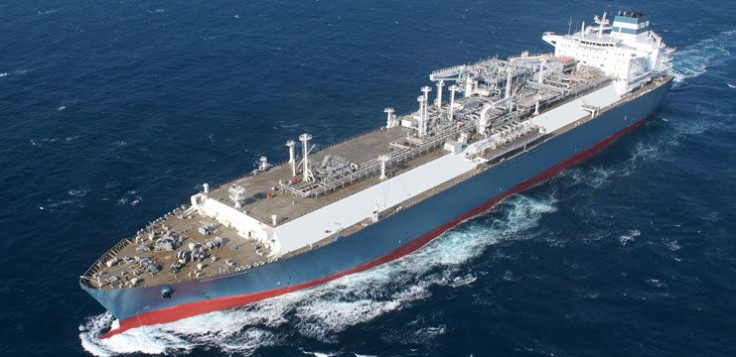South Korea Solidifies Status As World’s Top Shipbuilder

KEY POINTS
- South Korea accounted for 37% of global ship orders last year
- South Korea did not even enter the shipbuilding industry until 1968
- South Korea, China and Japan are the three top shipbuilding nations
South Korea retained its status as the world’s top shipbuilder for the second straight year in 2019, accounting for nearly 40% of global ship orders.
The Korean Ministry of Trade, Industry and Energy said local shipbuilders received new vessel orders totaling 9.43 million compensated gross tonnage, or CGT, in 2019, accounting for 37.3% of the total 25.29 million CGT for global ship orders placed last year.
CGT is defined as “an indicator of the amount of work that is necessary to build a given ship and is calculated by multiplying the tonnage of a ship by a coefficient.”
South Korea’s shipbuilding orders were valued at $22.3 billion last year.
South Korea was followed by China (8.55 million CGT of shipbuilding orders), Japan (3.28 million CGT) and Italy (1.14 million CGT).
South Korea was especially dominant in big-ticket orders, such as large-scale liquefied natural gas, or LNG, carriers (tank ships designed for transporting liquefied natural gas), very large crude carriers and large-size container ships.
Indeed, South Korean shipbuilders accounted for 94% of total global orders for large-size LNG carriers, 58% of very large crude carrier orders, and 61% of large-scale container ship orders last year.
Looking at 2020, South Korean shipbuilders seek to focus on building more liquefied petroleum gas, or LPG, carriers, that are emerging as a new cash cow for the industry due to strengthened vessel fuel emission regulations by the International Maritime Organization and a boom in shale gas.
To reduce the amount of sulfur oxide released into the air, the International Maritime Organization imposed a new regulation whereby ships have to use fuels with less than 0.5% sulfur content, down from 3.5%.
Demand for large LPG and LNG carriers -- considered eco-friendly vessels -- is expected to rise in the coming years.
The global shipbuilding industry projects that merchant vessel orders will reach 588 units in 2020, an 18.5% jump from 2019. Orders for LPG carriers are forecast to total 40 vessels, up from 31 in 2019. Of these 40 LPG vessels likely to be ordered, 30 vessels are expected to be very large gas carriers, said Clarkson Research, a British research firm.
“LPG carriers require a high level of technology as they liquefy gas, store it in the hold, and transport it, like LNG vessels,” said a South Korean shipbuilding industry official. “This is why foreign shipowners prefer South Korean shipbuilders.”
Demand for LPG carriers has been heightened by the development of shale gas in the U.S.
As for LNG vessels, Clarkson said that South Korea won 32 of the 40 LNG ships ordered in 2019. The country’s three biggest shipbuilders are expected to secure orders for 100 LNG carriers that the government of Qatar will place over the next 10 years.
However, the South Korean shipbuilding industry also faces some challenges – namely, the likelihood of more contract cancellations for drillships, merchant vessels used in exploratory offshore drilling for new oil and gas wells or for scientific projects.
In October 2019, Daewoo Shipbuilding & Marine Engineering of South Korea was notified of the cancellation of a contract for a drillship by a subsidiary of a Norwegian drilling company. Samsung Heavy Industries endured the cancellations of two drillship contracts that it had earlier won from a Swiss shipbuilder. Samsung suffered the cancellations for four drillship contracts last year.
Two of South Korea’s biggest shipbuilding companies, Hyundai Heavy Industries and Daewoo Shipbuilding & Marine Engineering, plan to merge, but the deal faces antitrust reviews from regulators around the world, including the European Commission, the European Union’s executive arm.
These two companies together would control 20% of the global market for oceangoing vessels, a senior commission official said.
The merger also needs regulatory approval from Japan, Singapore, China and Kazakhstan.
The Singapore regulatory body, the Competition and Consumer Commission of Singapore, already warned the merger “will remove competition” in the global shipbuilding industry.
But Hyundai officials assert the merger is necessary for the industry’s survival in South Korea.
“This is not about controlling the market, it’s about survival and if there is no consolidation we will all go down,” Hyundai Heavy Group President Sam Ka said. “All big shipbuilding countries are moving to merge their [ship] yards. There are thousands of jobs involved and there is no appetite for more state bailouts.”
South Korea, China and Japan are now estimated to control 90% of the global shipbuilding market – even though South Korea entered the industry relatively recently in 1968 when Hyundai Heavy Industries started building vessels. The sector now accounts for about 10% of all South Korean exports.
By the 1970s and 1980s, South Korea became a dominant producer of ships, including oil supertankers and oil-drilling platforms.
© Copyright IBTimes 2025. All rights reserved.





















